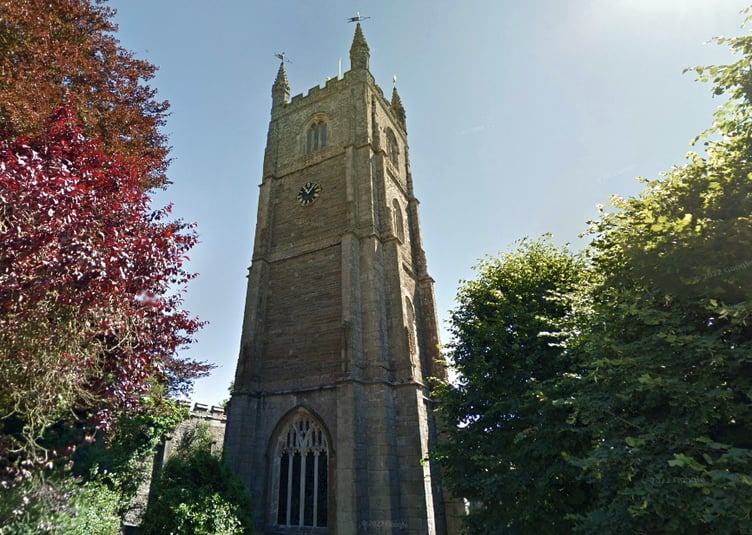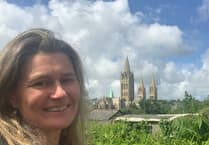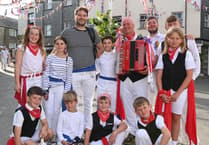By Saltash Old Cornwall Society
‘Wind in the Willows’ written by Kenneth Grahame in 1908, is one of the best loved children’s novels of all time, and is still read and enjoyed by millions of children and adults today, despite being written over 100 years ago.
‘Wind in the Willows’ was based on the animal kingdom on, and adjacent to the banks of the River Thames and featured such delightful animal characters as Toad, Rat, Mole, Badger, Weasel, Rabbits, Field Mice and a Horse; all of whom Kenneth brought to life as loveable, talking and scheming characters.
Martin Lister, general secretary of the Saltash Old Cornwall Society, certainly conveyed such intriguing imagery of the story and cleverly concentrated on the sometimes tragic life of the author Kenneth, and his only son Alastair (nicknamed Mouse).
Martin was the keynote speaker at the January meeting of the society and gave a most vivid and fascinating lecture to the members about the life and times of Kenneth Grahame; and his strong association with Cornwall.
Kenneth a British born writer was born in Edinburgh March 8, 1859.
The family with three children eventually moved to Argyll fishing village, where Kenneth began “Messing about in boats.” When Kenneth was five years old, his mother had a fourth child but sadly died two weeks later. His father who had a drink problem packed all the children off to their ‘Granny Ingle’ in England at Cookham Dean, so he grew up near the River Thames, abutted by wonderful countryside and scenery. Aged nine Kenneth went to boarding school in Oxford, still near the river. He had hoped to go to Oxford University, but there was no money available so he was given a job in London at the Bank of England.
During his childhood, there were times when Kenneth became quite ill, during those times his sister Helen took him to convalesce in Cornwall, in the Lizard. Kenneth fell in love with Cornwall – he dressed as a fisherman and was mistaken for one. Kenneth often went out to sea, and his experience resulted in descriptions within the “Wayfarers All” chapter “Wind in the Willows”
Kenneth became very dissatisfied with London, so started writing in his office. Writings such as “Pagan Papers” essays – then stories about children – “Dream Days” and “The Golden Age” they all sold well. During this period, Kenneth met Elspeth Thomson, and an unlikely romance began.
Ill again with pneumonia, Helen took him this time to Torquay but he didn’t like it there, so she took him to Fowey, in Cornwall and Kenneth loved it there. Their hosts, friends of the family, Sir Arthur Quiller-Couch and Edmond Atkinson (commodore of the Fowey yacht club) took Kenneth rowing, picnicking and fishing.
Whilst Kenneth and Helen were in Fowey, the engagement of Kenneth and Elspeth was announced, much to the surprise of friends and family. Elspeth immediately came down to Cornwall and they married 1899 in St Fimbarrus Church, in Fowey. The couple had a three day honeymoon at St Ives; then travelled back to Fowey and stayed with Sir Arthur Quiller-Couch for a spell.
Their first and only child, Alastair was born 1900 (nicknamed “Mouse”) Alastair was born blind in one eye and a squint in the other. Alastair, although much loved, was at times quite spoilt.
When Mouse was four years old, Kenneth started telling him bedtime stories. Mouse asked for a story about a mole, giraffe and a water rat; which eventually included a toad.
When Kenneth and Elspeth visited Falmouth and Fowey for a prolonged holiday, Mouse was sent to Littlehampton to be looked after by a nursemaid. Mouse was extremely upset at the loss of bedtime stories, so Kenneth promised to mail them to him. Of these bedtime stories, fifteen letters remain, which basically are the full tale of ‘Adventures of Toad.’
When Kenneth and Sir Arthur Quiller-Couch had a picnic with Austin Purves (American Artist) on Fowey River, he claimed that the idea of Mole and Ratty became a vision for Kenneth in his novel “Wind in the Willows.”
Back in London Constance Smedley a literary agent contacted Kenneth urging him to write another book influenced from Mouse’s bedtime and Toad stories. Kenneth reluctantly agreed.
Mr Mole and his fictional creatures– firstly named “Wind in the Reeds” and eventually “Wind in the Willows.” The Chapter “Wayfarers” added last has description of Fowey, which gives a very clear indication of the influence of the Fowey River and its evocative animal life.
Kenneth had admirers in extremely high places, President Theodore Roosevelt had admired ‘Dream Days’ and Golden Age, and invited Kenneth Grahame to the White House. Furthermore, another great admirer was Kaiser Wilhelm ll the German Emperor.
“Wind in the Willows” was first published by Methuen, the Publishers doubted it would sell and critics panned it. The Times said that it was negligible as a contribution to natural history. However, President Roosevelt loved it, and persuaded Kenneth Grahame to publish in the USA and consequently, sales soared!
In 1911 Kenneth and Elspeth took Mouse to discover Cornwall, they stayed in the Lizard, and then onto Fowey, it was an idyllic holiday for them all. Kenneth described sailing to Lerryn with Mouse and rowing back. Kenneth recalled that Fowey was busier with larger ships; but the town looked just the same.
When Mouse got back to Rugby he hated it; he left after six weeks to study at Eton, he completed only three terms before having a nervous breakdown. Kenneth wanted Mouse to have the chance of education that he missed out on; public school and Oxford, though Mouse was temperamentally unsuited to either.
At Oxford Mouse did little work, he lacked enthusiasm educationally and never socialised. On May 7th 1920 aged twenty; Mouse walked over the meadows to the level crossing, and was knocked down by a train. The Coroner declared that it was an accident; however, it was generally believed to be suicide.
Following Mouse’s death, Kenneth and Elspeth closed down their Berkshire home near the Thames and lived for ten years in Italy. They then returned to England living in a new home in Pangbourne near the River Thames.
Two years later 1932 Kenneth died aged seventy two. Elspeth died in 1946 aged eighty four.
In her vote of thanks to Martin, Sue Hooper, President of the Saltash Old Cornwall Society, remarked on the genius of Kenneth Grahame and added that Martin’s lecture was intriguing, fascinating and captivating all at the same time. Further, Sue said how ironic it was that Kenneth Grahame had written fictional thrilling stories based on animals displaying human behaviour to a captive audience of children and adults alike; yet his own child was sad and lonely most of his life, which almost certainly resulted in him losing his life at the tender age of 20 years.

.jpg?width=209&height=140&crop=209:145,smart&quality=75)



Comments
This article has no comments yet. Be the first to leave a comment.